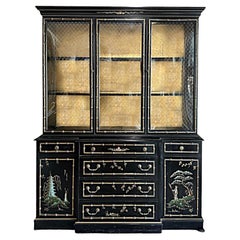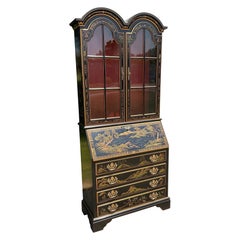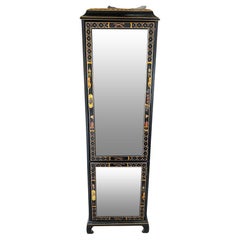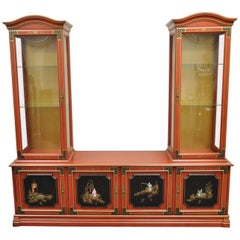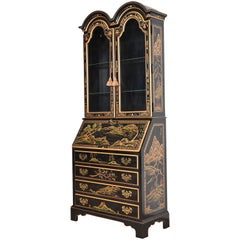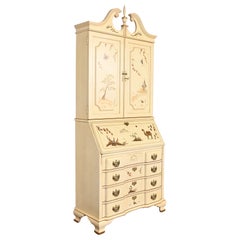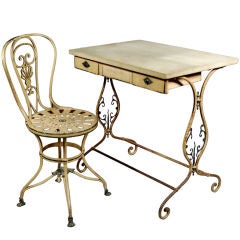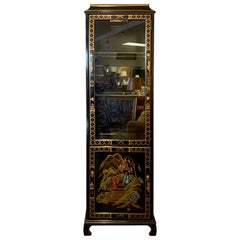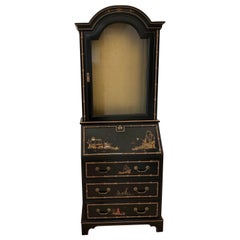Jasper Company Chinoiserie Furniture
Late 20th Century American Chinoiserie Cabinets
Glass, Wood
Vintage 1970s North American Chinoiserie Secretaires
Lacquer
Mid-20th Century Chinoiserie Cabinets
Glass, Wood
Mid-20th Century American Chinoiserie Cabinets
Glass, Wood
Late 20th Century American Chinoiserie Desks
Brass
Mid-20th Century American Chinoiserie Desks
Brass
People Also Browsed
Antique 1890s German Dinner Plates
Porcelain
Antique 19th Century French Desks and Writing Tables
Slate, Tin, Iron
Vintage 1910s English Edwardian Vitrines
Mahogany, Satinwood
Mid-20th Century Italian Mid-Century Modern Sofas
Fabric, Wood
Vintage 1980s Mid-Century Modern Vitrines
Brass
Late 20th Century Indonesian Other Beds and Bed Frames
Wood, Paint
Vintage 1960s Shelves
Hardwood
Late 20th Century Chinoiserie Shelves and Wall Cabinets
Giltwood, Wood
Mid-20th Century Chinoiserie Bookcases
Metal
Antique Late 18th Century English George III Bookcases
Oak
Mid-20th Century French Louis XVI Center Tables
Wood
Antique 17th Century Italian Baroque Bookcases
Spruce
2010s British Beds and Bed Frames
Mahogany
21st Century and Contemporary Unknown Louis XVI Loveseats
Wood
Mid-20th Century Italian Mid-Century Modern Shelves
Brass
21st Century and Contemporary Vietnamese George II Dry Bars
Wood
Recent Sales
Vintage 1960s American Mid-Century Modern Vitrines
Glass, Wood
Vintage 1960s American Chinoiserie Secretaires
Wood, Lacquer
Vintage 1950s American Chinoiserie Wall Mirrors
Mirror, Paint
Mid-20th Century American Chinoiserie Secretaires
A Close Look at chinoiserie Furniture
Emerging in the 17th century, chinoiserie appropriated the aesthetics and imagery of popular East Asian design for European-made versions. Reflecting the exoticization of China, Japan and other countries in this era, the word directly translates from French to “Chinese-esque,” which reveals its shortcomings as a style of furniture and decor that often stereotypically and reductively mimics Asian culture rather than showcasing and paying tribute to its artistic traditions.
The enthusiastically decorative chinoiserie style was propelled by influential tastemakers including French King Louis XIV, whose Trianon de Porcelaine in 1670 was inspired by Chinese architecture. Expanded trade between the East and West led to a demand for porcelain, lacquer objects, silk and other goods, which further informed the fanciful furniture being crafted in Europe.
Artisans working in the chinoiserie style used materials and elements like pagoda shapes, bamboo, lacquer surfaces, bird and flower motifs and other interpretations of Asian design on pieces that were frequently set against vibrant wallcoverings. This whimsical approach yielded chinoiserie furniture that boasted dramatic flourishes drawing on the natural world and reflected the dominance of Rococo during the 18th century.
As chinoiserie was shaped by approximations of Asian design by European creators, it had regional variations, such as Chinese Chippendale in England where cabinets, chairs and tea tables had wooden fretwork designs and “japanned” surfaces intended to resemble lacquer work that was created in East Asia. In North America, furniture makers in Boston and New York integrated chinoiserie-painted scenes into Queen Anne furniture.
Antique chinoiserie furniture has continued to be fashionable, from its popularity with decorators of the Hollywood Regency era — James Mont, Tommi Parzinger, William Haines and Samuel Marx favored the style — to contemporary interior designers, although it brings with it a complex history.
Find a collection of chinoiserie bedroom furniture, cabinets, decorative objects and more on 1stDibs.
Finding the Right Case Pieces and Storage Cabinets for You
Of all the antique and vintage case pieces and storage cabinets that have become popular in modern interiors over the years, dressers, credenzas and cabinets have long been home staples, perfect for routine storage or protection of personal items.
In the mid-19th century, cabinetmakers would mimic styles originating in the Louis XIV, Louis XV and Louis XVI eras for their dressers, bookshelves and other structures, and, later, simpler, streamlined wood designs allowed these “case pieces” or “case goods” — any furnishing that is unupholstered and has some semblance of a storage component — to blend into the background of any interior.
Mid-century modern furniture enthusiasts will cite the tall modular wall units crafted in teak and other sought-after woods of the era by the likes of George Nelson, Poul Cadovius and Finn Juhl. For these highly customizable furnishings, designers of the day delivered an alternative to big, heavy bookcases by considering the use of space — and, in particular, walls — in new and innovative ways. Mid-century modern credenzas, which, long and low, evolved from tables that were built as early as the 14th century in Italy, typically have no legs or very short legs and have grown in popularity as an alluring storage option over time.
Although the name immediately invokes images of clothing, dressers were initially created in Europe for a much different purpose. This furnishing was initially a flat-surfaced, low-profile side table equipped with a few drawers — a common fixture used to dress and prepare meats in English kitchens throughout the Tudor period. The drawers served as perfect utensil storage. It wasn’t until the design made its way to North America that it became enlarged and equipped with enough space to hold clothing and cosmetics. The very history of storage case pieces is a testament to their versatility and well-earned place in any room.
In the spirit of positioning your case goods center stage, decluttering can now be design-minded.
A contemporary case piece with open shelving and painted wood details can prove functional as a storage unit as easily as it can a room divider. Whether you’re seeking a playful sideboard made of colored glass and metals, an antique Italian hand-carved storage cabinet or a glass-door vitrine to store and show off your collectibles, there are options for you on 1stDibs.
